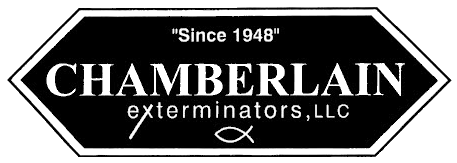Powder Post Beetles and Wood-Inhabiting Fungi
Powder Post Beetles
We use the term “powder post beetles” for several groups of small wood boring beetles. In North Carolina, our primary concern is with anobiid (an-oh-be-id) powder post beetles, which attack the “softwoods”, such as spruce, pine and fur, that are used to make floor joists, wall studs and other structural lumber. Lyctid (lick-tid) powder post beetles attack only hardwoods, such as oak, hickory, and maple. They tend to be a problem with antique furniture, cabinets, wooden floors and some moldings in houses.
The term “powder post” refers to the type of damage caused by the beetles. Infested wood may fine on the outside. only months or years later do we discover the damage. We rarely find the actual damage. Typically, the only indication of a powder post beetle infestation are small round holes, about 1/32 – 1/16 inch in diameter, scattered over the woods surface. In some cases, only one or a few boards are infested. In other instances, several joists may show sign of powder post beetle activity. At first sight, people often assume that these holes are made by insects boring into the wood. the holes are actually made by adult beetles exiting the wood after they complete their life cycle. As it emerges from the hole, the beetle pushes out light-colored flower like “frass” that will be found streaming from these hole or on the ground beneath the infested boards. The frass of the Lyctid beetles looks and feels like talcum powder. The frass of anobiids beetles is powdery, but has a gritty texture. Frass that is yellow and caked is “old” and may indicate an infestation that is no longer active. You may find exit holes and frass almost any time of the year, particularly in heated buildings or crawl spaces. However, the peak time to watch for emerging beetles occurs in May through August.
You cannot simply look at a piece of wood to determine if the damage is severe enough to require repair or replacement. Probing the wood may give you some indication of the extent of the damage. if you are concerned about the condition of structural wood, such as floor joists, you should contact a structural engineer.
Powder post Beetle Control
Fungi Associated with Wood
Water-Conducting Fungi
Sap stain Fungi
These fungi are similar to surface molds except that the discoloration goes deeper into the wood. The wood may have a blue, black or gray color; however, the staining fungi do not weaken the wood. Sap stain fungi indicate that the wood was wet at some time. However, once the wood dries the fungus becomes dormant and stops growing. No chemical control measures are needed.
Brown Rot and White Rot
These fungi actually cause structural damage to wood. They often produce a white cottony growth on the surface of the wood. Brown rot is one of the most common types of wood-decaying fungi. As the wood decays, it darkens, shrinks, and twists, with crack forming across the grain of the wood. Finally, the wood becomes dry and powdery. Wood decayed by white rot fungi has a bleached appearance and is fibrous and soft sponge-like). Wood that is saturated with water (30% moisture readings) will rot. If the wood moisture drops below 20%, then these fungi will not grow. Brown and white rot fungi can be controlled by removing the source of moisture that allows them to grow (e.g., by improving ventilation or drainage, repairing leaks, etc.). Spraying wood with chemicals should not be a total replacement for moisture control. If the moisture source cannot be eliminated, all decayed wood be replaced with pressure treated wood.
This report was written by Michael G. Waldvogel, Extension Entomologist, and Larry Jahn, Extension Wood Products Specialist
